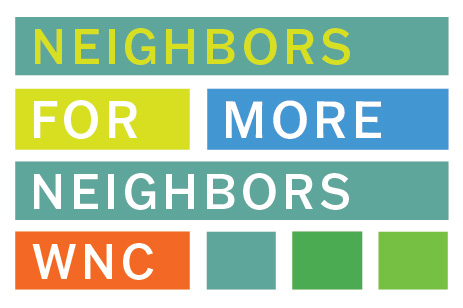Right now, the City of Asheville is undergoing an operational analysis of its transit system and is asking the public to influence the system’s future. We have the chance to redesign our bus network so that it could be more efficient and effective, further reaping the benefits of good land use policy and denser development on our city’s major corridors. We at MountainTrue are calling on City Council to prioritize ridership and bus frequency to increase service where there are already more people, jobs, and opportunities.
Earlier this year the City of Asheville changed their development rules to make it easier to build large apartment buildings on main roads like Merrimon Avenue and Hendersonville Road. This was a significant step in the right direction in addressing our housing shortage. The next thing we need to do is make it easier for residents on these corridors to access jobs and opportunities by taking transit instead of driving personal vehicles. The ridership model where buses come every 15 – 30 minutes has been shown to reap exponential benefits for riders and aligns with our goals at Neighbors for Neighbors WNC of building more homes where infrastructure already exists, instead of continuing sprawling development patterns across our city.
In considering the two different design concepts put forth in the city’s survey, our existing network model is fully aligned with the coverage concept. Back in 2019 the city invested significant resources into providing more complete geographic coverage of bus routes to more parts of the city in an effort to better serve residents. Unfortunately, this strategy backfired and even before the pandemic set in, the system saw a large decrease in ridership because the trade offs between more coverage and less frequency mean the system works less well and for far fewer city residents than it did before, despite the map looking like it serves more people. Since this decision to move towards greater coverage was made, not only has the system served far fewer riders, but it also has been facing a funding deficit year after year because there has been no reliable funding source to support this increase in coverage.
Today, if you were to take a bus from South Asheville to the west side of town, that trip could take you nearly 2 hours of travel time including waiting to get on the first bus, making a transfer to a second bus in downtown, and then the riding time on each of those buses. If you need to get to and from work, let alone add any side trips to your day, like dropping a child at school or going to the grocery store, this form of transportation becomes practically impossible – an idea that fellow transit advocates at Greater Greater Washington have labeled a “transportation time tax.” This time tax idea is a helpful way to think of the burden transit riders must shoulder to pay for how car-centric our development patterns have been for decades.
In an ideal world, we would have comparable funding from the federal government to support public transit in the same way it funds car-centric transportation infrastructure. If our nation or even our state budgets funded things like sidewalks and transit even one tenth as much as they pay for personal vehicle infrastructure like highways, then our city would be able to provide good transit frequency in addition to broad coverage. However, with very limited resources, our city is faced with difficult choices. In this case, we hope our leaders are brave enough to face the fact that our current system design is not working. It is time to try a different model and see if we can make this service work better and serve more people.
